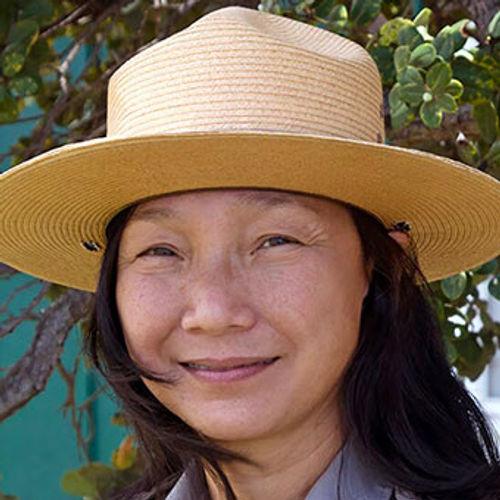The last four years at Hawaii Volcanoes National Park have been harrowingly hectic. In spring 2018 Kilauea erupted, and the park was closed for several months, with repairs continuing long after reopening. Just as operations were reaching some normalcy, the pandemic arrived, and with it more closures and delays. Volcanic activity at Kilauea increased in September, with lava rising up in the summit crater and columns of smoke billowing upward. But recently, the National Park Service kicked off the public comment period for a series of infrastructure improvements to address damage from the 2018 eruption, including a new visitor center. Superintendent Rhonda Loh spoke with Travel Weekly’s Hawaii editor Tovin Lapan about all the action at the park.

Rhonda Loh
Q: Where does the recovery process from the 2018 eruption stand?
A: Today visitors won’t notice much, if any, impact in terms of outdoor access. All of the roads and trails have been repaired except for one trail we deemed too unstable to restore. Jaggar Museum and the observation deck and a U.S. Geological Survey (USGS) building there are all closed, and the upcoming project will relocate those services and functions. They sustained the most damage being closest to the crater rim, and it wasn’t feasible to make significant reinforcements to reopen in that location.
Q: What are some highlights of the proposed recovery project?
A: The new Visitor Center being proposed will have enough space for an exhibit on the geologic history and a broad narrative of what makes the park special. It just won’t be exactly like it was before at the Jaggar Museum. I think some of those exhibits were probably created 30 or 40 years ago. So people’s perspectives have changed, how we tell our stories will be broader and more inclusive.
Q: What’s the timeline on the project?
A: Typically, environmental assessments take about six months to complete nowadays, and we just started ours. We could be breaking ground as early as next year if everything goes well. We also need to see what feedback we get during the public input period now to get a better handle on the timeline going forward.
Q: What’s your advice for people planning a visit?
A: We have a great section of our park website, “Plan your visit,” that lets you know what’s currently going on in the park and if there are any area closures or alerts. And the eruption can wax and wane, so you have pauses sometimes and other times when it’s more active. Weather can also affect which way the volcanic plume goes and other factors. One of the big things people don’t realize is that the summit crater, where our main visitation occurs, is at 4,000 feet elevation. It can be quite cold and it can be rainy. You’ll often see visitors dressed for the beach coming up to the park wearing shorts and flip flops, and they’re really cold and they’re covered in towels trying to stay warm.
Q: What about specific tips for seeing volcanic activity?
A: There are several good spots along the crater rim where you can see the volcanic plume right now. The best place to see the actual red lava is at Keanakakoi Overlook. That’s a very popular place, and the parking can get crowded. The Uekahuna viewing spot has the most parking, and you can spread out more, but you won’t necessarily see the red lava. At night, though, it’s spectacular from that spot because the lava lights up the clouds above and you are close enough to hear the volcanic activity within the crater. It’s pretty amazing.
If you want to see the volcano at night, I suggest you come after 9 p.m. or come in the morning before daybreak. Those are the best times to see the activity without the crowds.
Circulation, especially from the entrance station to the Visitor Center will be greatly improved. There’s always been a bottleneck, and the original Visitor Center wasn’t built to be one. It was actually supposed to be a science and administrative building for USGS when it was originally built in the mid-last century … I also think there’s a potential for the current Visitor Center to be used in the future for educational services and other fun programming.
